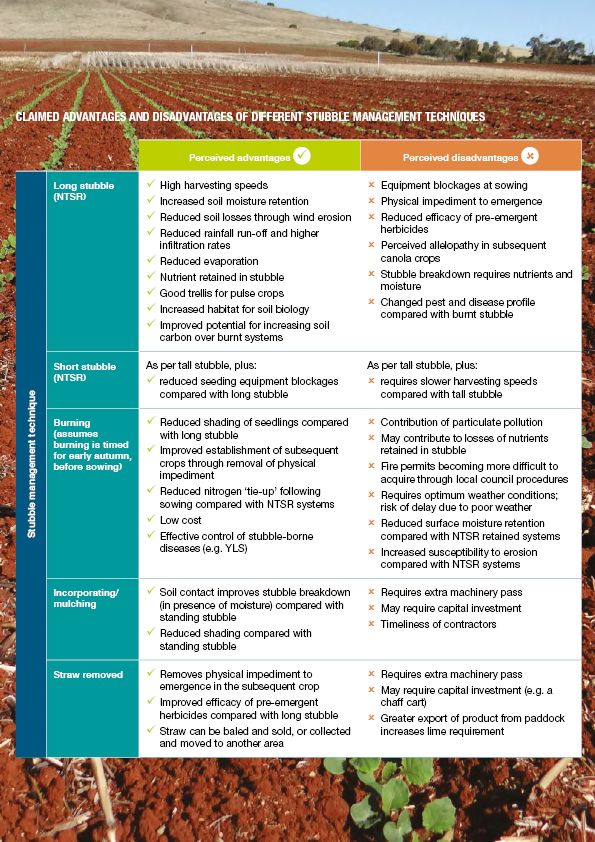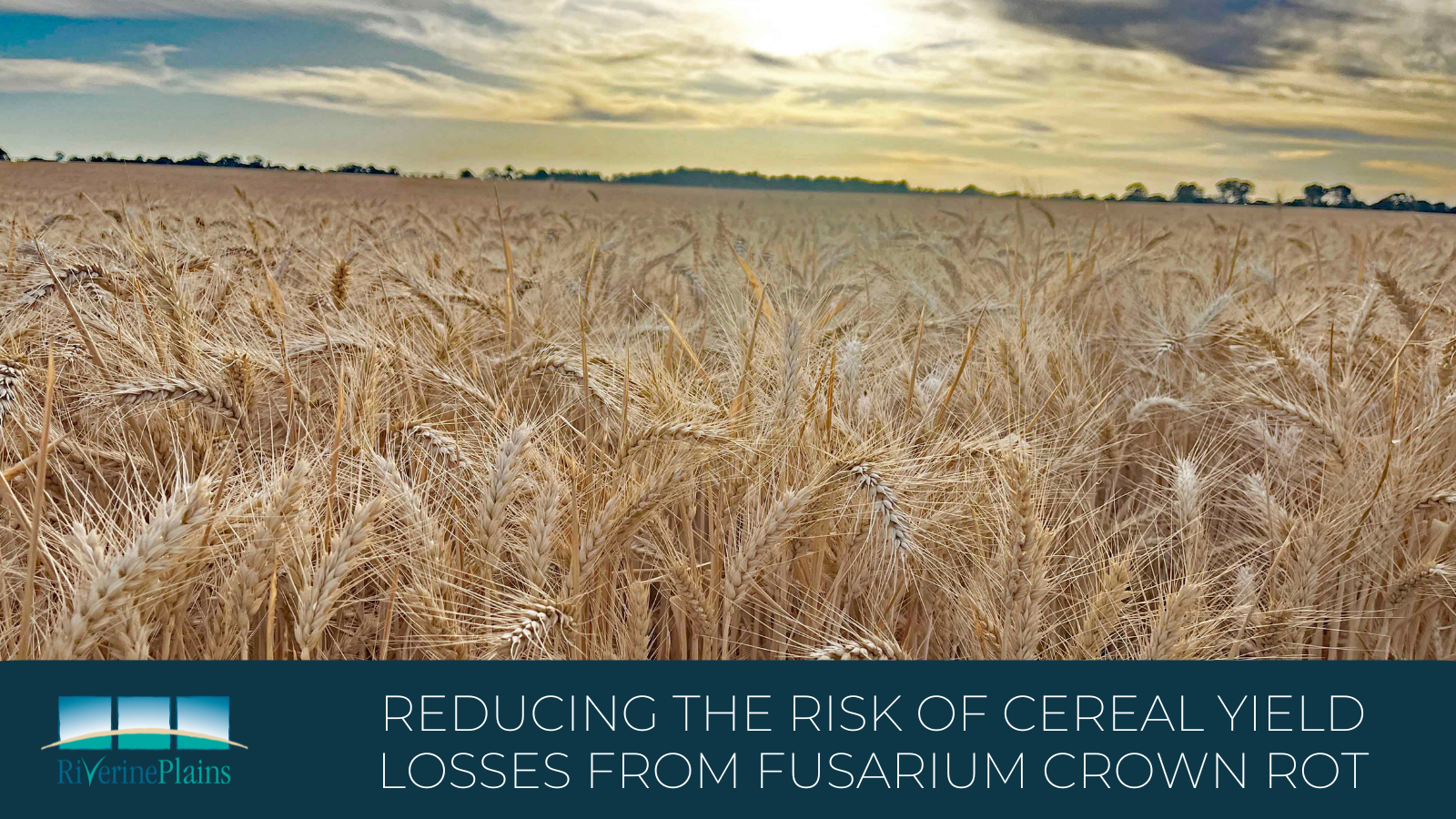Stubble management at harvest reaps rewards at sowing

Key Messages
- stored soil moisture can be important for establishment and yield in dry seasons
- stubble management technique can impact plant available water
- managing high stubble loads begins at harvest and helps prevent issues at sowing
We are extremely fortunate in the Riverine Plains this year to be heading into harvest with generally good yield potential, and with it, some potentially high stubble loads.
With harvest rapidly approaching, it’s the right time to think about how stubble management could impact sowing and establishment next year, especially given predictions of a warmer and drier conditions in the months ahead.
So, what role can stubble management play in increasing soil water, and what can farmers do to make sowing easier next year?
It starts with stubble
The benefits of stubble retention are well known and practiced by many Riverine Plains growers to increase soil moisture ahead of sowing, reduce the effects of wind and water erosion, while also lowering evaporation and increasing infiltration rates.
However, the sheer volume of cereal stubbles produced in some seasons can see farmers resort to burning residues just prior to sowing. But this has negative environmental and social outcomes and also causes nutrients to be lost from the system.
Fortunately, a number of alternative techniques exist to allow farmers to retain their stubbles right though to sowing. For example, farmers can use different harvest cutting heights (low or high) to change the length of standing stubble and manipulate the amount of trash that goes out the back of the header. This trash can then be spread or dropped in rows as chaff lines for livestock to graze, while livestock can also mop up grain residues and flatten stubble (if grazing, be careful to retain adequate ground cover for soil protection). Trash and stubble breakdown can be accelerated, when moisture is present, by mulching or incorporating stubble (shallow or deep), with a range of mechanical implements available to help achieve this. Stubble can also be baled and removed from the paddock, and the straw sold.
Each method comes with advantages and disadvantages, with costs associated with increased labour and mechanical requirements. The following table, from Stubble retention in the Riverine Plains, summarises the perceived key points for the different approaches.

Stubble and soil moisture at sowing
The Riverine Plains project Improving soil to optimise water use on-farm recently demonstrated how different stubble management techniques can impact soil water and economics of the following crop. The project found that cutting stubble low after harvest retained the most (23mm) plant available water (PAW) in the 0-20cm depth at sowing, followed by stubble cut low and deep incorporated (20 mm PAW). The least moisture was observed in the burnt treatment (10 mm PAW).
A key message from this trial was that any form of stubble cover can improve moisture retention in the soil surface, compared to burning. This may assist emergence during a dry start, while soil moisture at depth may increase potential yield during a dry growing season.
Stubble length and crop development
While stubble management is not the primary driver influencing crop production (providing seeding equipment and stubble management are compatible), long cereal stubble (45cm) can delay dry matter production and slow crop development, compared to crops sown into shorter stubble (15cm).
As described in Stubble retention in the Riverine Plains, this could be an advantage for grain growers looking to manipulate stubble height to spread their flowering window across varieties and paddocks. With frost risk often higher in dry seasons compared to wetter seasons, this could be a practical way for farmers to spread frost risk across the farming operation.
Row spacing, stubble management and yield
Sowing machinery efficiency can decrease when stubble loads are 3t/ha or more. Where high stubble loads exist, inter-row sowing can improve sowing efficiency by improving trash flow.
While wider rows can make interrow sowing easier, GRDC-funded research carried out by Riverine Plains and presented in Between the Rows, showed that wheat sown on wider rows (>30cm) incurred a yield penalty due to later canopy closure and decreased dry matter production. This research also showed that narrow row spacings yielded considerably higher, produced more tillers and use more nitrogen than wider rows. The narrow row spacings (22.5cm) in this trial also had greater water use efficiency (6.8%) than 30cm row spacings in wheat.
Water use efficiency can be improved in wide row spacings by sowing earlier than the traditional sowing window, with suitable varieties.
Stubble breakdown
Stubble breaks down at different rates, with standing cereal stubble breaking down much more slowly than incorporated or mulched stubbles, assuming adequate summer rainfall.
With outlooks for a drier summer, poor stubble breakdown could potentially exacerbate trash flow issues and hairpinning at sowing. To help avoid blockages, ensure the length of standing stubble is shorter than the width of the seeding row. The spacing between tines should be about twice the stubble length – if the inter-tine clearance is small, stubble will need to be cut short at harvest.
New project: De-risking early sown crops
Maximising the opportunities from early sown crops is important in drier seasons.
Riverine Plains has recently commenced the ‘De-risking early sown crops’ project, funded by the Australian Government’s Future Drought Fund. To learn more about this project, please contact Riverine Plains Inc Project Officer Kate Coffey at kate@riverineplains.org.au
Resources and Further reading
Maximising sowing opportunities under dry soil conditions in the high rainfall zone (GRDC)
Successful sowing calls for adequate preparation (Riverine Plains)
Maximising sowing opportunities under dry soil conditions in the high rainfall zone (GRDC)
Fast track ag innovation project (Riverine Plains)


